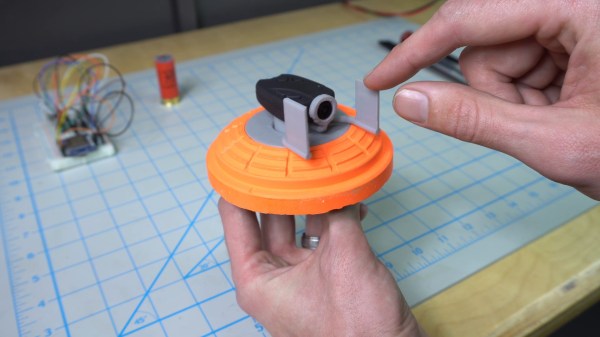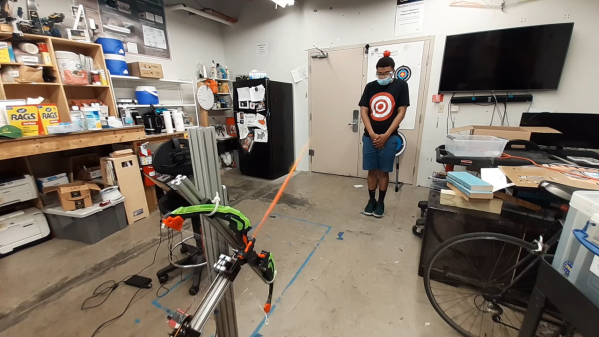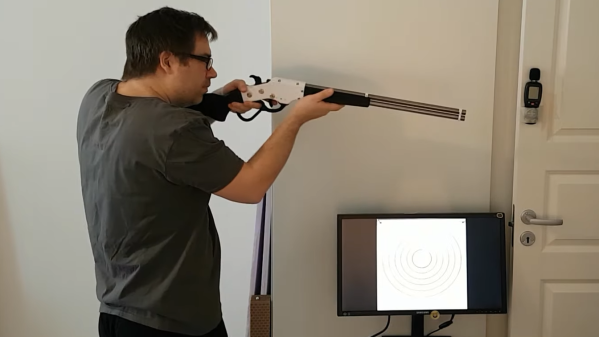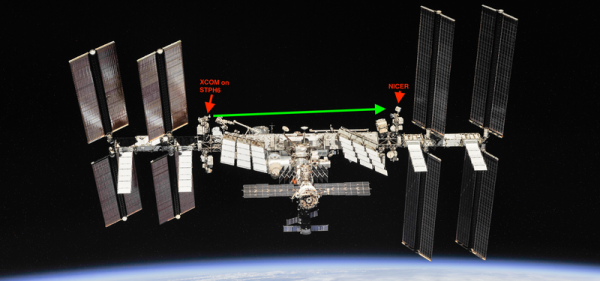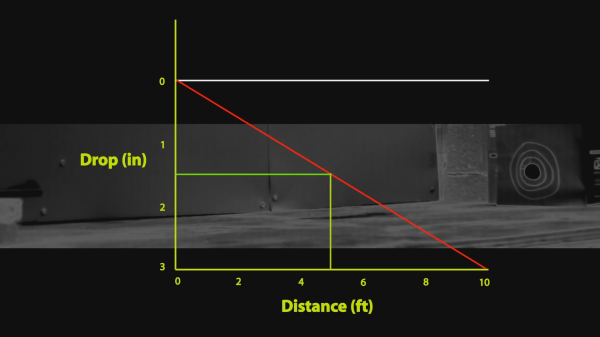Pinball machines have something for everyone. They’re engaging, fast-paced games available in a variety of sizes and difficulties, and legend has it that they can be played even while deaf and blind. Wizardry aside, pinball machines have a lot to offer those of us around here as well, as they’re a complex mix of analog and digital components, games, computers, and artistry. [Daniele Tartaglia] is showing off every one of his skills to build a tabletop pinball machine completely from the ground up.
target14 Articles
Target Lifting Mechanism Goes Wireless
“WARNING: DO NOT Hammer on this mechanism” sounds like the start of a side quest. A quest is exactly what [CelGenStudios] started when he came upon a strange box with this message.
The military identification tag was printed “Target Holding Mechanism, M31A1”, along with some other information. It also informed the reader that the device weighed 70lbs (31.75kg). Something carrying that much mass just had to be good.
Cheap Camera Gives Clay-Pigeon’s-Eye View Of Trap Shooting
Speaking from experience, it’s always fun to build something with the specific intention of destroying it. Childhood sessions spending hours building boats from scrap wood only to take them to a nearby creek to bombard them with rocks — we disrespectfully called this game “Pearl Harbor” — confirms this. As does the slightly more grown-up pursuit of building this one-time-use clay pigeon camera.
The backstory on this build, which dates all the way back to 2017, is that [Thomas] was invited to a birthday bash at the local shooting range for a round of trap shooting. For the uninitiated, trap is a sport that involves launching a clay disc (known as a pigeon) into the air as a moving target and shooting it down with a shotgun. It’s a lot of fun, but [Thomas] was looking for a way to make it even more fun.
After toying with the idea of buying a cheap drone for aerial target practice, he settled on the idea of making a clay pigeon camera. After procuring a cheap keychain camera, he designed a simple wind vane mount for the camera, to keep it pointed in one direction rather than spinning with the pigeon. The wind vane was 3D printed and attached to the pigeon with a skate bearing, and the rig was ready for the range. The snuff film below tells the whole tale; the camera performed admirably and the wind vane did a good job of steadying the camera for all of about five seconds, until the inevitable and dramatic demise of the pigeon.
Watching this makes us feel like we need more projects designed for intentional destruction. Safety first, of course, but we’d be keen to see what everyone comes up with.
Continue reading “Cheap Camera Gives Clay-Pigeon’s-Eye View Of Trap Shooting”
Machine-Vision Archer Makes You The Target, If You Dare
We’ll state right up front that it’s a really, really bad idea to let a robotic archer shoot an apple off of your head. You absolutely should not repeat what you’ll see in the video below, and if you do, the results are all on you.
That said, [Kamal Carter]’s build is pretty darn cool. He wisely chose to use just about the weakest bows you can get, the kind with strings that are basically big, floppy elastic bands that shoot arrows with suction-cup tips and are so harmless that they’re intended for children to play with and you just know they’re going to shoot each other the minute you turn your back no matter what you told them. Target acquisition is the job of an Intel RealSense depth camera, which was used to find targets and calculate the distance to them. An aluminum extrusion frame holds the bow and adjusts its elevation, while a long leadscrew and a servo draw and release the string.
With the running gear sorted, [Kamal] turned to high school physics for calculations such as the spring constant of the bow to determine the arrow’s initial velocity, and the ballistics formula to determine the angle needed to hit the target. And hit it he does — mostly. We’re actually surprised how many on-target shots he got. And yes, he did eventually get it to pull a [William Tell] apple trick — although we couldn’t help but notice from his, ahem, hand posture that he wasn’t exactly filled with self-confidence about where the arrow would end up.
[Kamal] says he drew inspiration both from [Mark Rober]’s dart-catching dartboard and [Shane Wighton]’s self-dunking basketball hoop for this build. We’d say his results put in him good standing with the skill-optional sports community.
Continue reading “Machine-Vision Archer Makes You The Target, If You Dare”
Human-Powered Laser Gun Makes Battery-Free Target Practice
[Dirk] shared a fascinating project of his that consists of several different parts coming together in a satisfying whole. It’s all about wanting to do target practice, indoors, using a simple red laser dot instead of any sort of projectile. While it’s possible to practice by flashing a red laser pointer and watching where it lands on a paper target, it’s much more rewarding (and objective) to record the hits in some way. This is what led [Dirk] to create human-powered, battery-free laser guns with software to track and display hits. In the image above, red laser hits on the target are detected and displayed on the screen by the shooter.
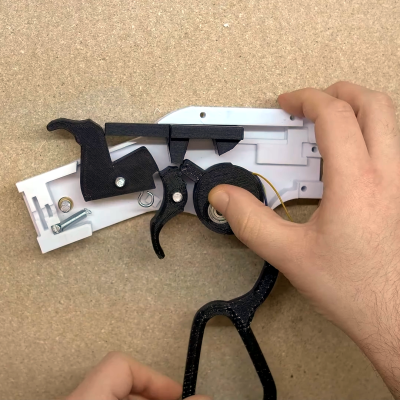
There are several parts to this project and, sadly, the details are a bit incomplete and somewhat scattered around, so we’ll go through the elements one at a time. The first is the guns themselves, and the star of the show is his 3D printed cowboy rifle design. The rifle paints the target with a momentary red laser dot when the trigger is pressed, but that’s not all. [Dirk] appears to have embedded a stepper motor into the lever action, so that working the lever cranks the motor as a generator and stores the small amount of power in a capacitor. Upon pulling the trigger, the capacitor is dumped into the laser (and into a piezo buzzer for a bit of an audio cue, apparently) with just enough juice to create a momentary flash. We wish [Dirk] had provided more details about this part of his build. There are a few more images here, but if you’d like to replicate [Dirk]’s work it looks like you’ll be on your own to some extent.
As for the target end of things, blipping a red dot onto a paper target and using one’s own eyeballs can do the job in a bare minimum sort of way, but [Dirk] went one further. He used Python and OpenCV with a camera to watch for the red dot, capture it, then push an image of the target (with a mark where the impact was detected) to a Chromecast-enabled screen near the shooter. This offers much better feedback and allows for easier scoring. The GitHub repository for the shot detector and target caster is here, and while it could be used on its own to detect any old laser pointer, it really sings when combined with the 3D printed cowboy rifle that doesn’t need batteries.
Not using projectiles in target practice does have some benefits: it’s silent, it’s easy to do safely, there is no need for a backstop, there are no consumables or cleaning, and there is no need to change or patch targets once they get too many holes. Watch it all in action in the video embedded below.
Continue reading “Human-Powered Laser Gun Makes Battery-Free Target Practice”
X-Rays Are The Next Frontier In Space Communications
Hundreds of years from now, the story of humanity’s inevitable spread across the solar system will be a collection of engineering problems solved, some probably in heroic fashion. We’ve already tackled a lot of these problems in our first furtive steps into the wider galaxy. Our engineering solutions have taken humans to the Moon and back, but that’s as far as we’ve been able to send our fragile and precious selves.
While we figure out how to solve the problems keeping us trapped in the Earth-Moon system, we’ve sent fleets of robotic emissaries to do our exploration by proxy, to make the observations we need to frame the next set of engineering problems to be solved. But as we reach further out into the solar system and beyond, our exploration capabilities are increasingly suffering from communications bottlenecks that restrict how much data we can ship back to Earth.
We need to find a way to send vast amounts of data back as quickly as possible using as few resources as possible on both ends of the communications link. Doing so may mean turning away from traditional radio communications and going way, way up the dial and developing practical means for communicating with X-rays.
Continue reading “X-Rays Are The Next Frontier In Space Communications”
Coming Back To Curving Bullets
What do you do when you have time, thousands of dollars worth of magnets, and you love Mythbusters? Science. At least, science with a flair for the dramatics. The myth that a magnetic wristwatch with today’s technology can stop, or even redirect, a bullet is firmly busted. The crew at [K&J Magnetics] wanted to take their own stab at the myth and they took liberties.

Despite the results of the show, a single magnet was able to measurably alter the path of a projectile. This won’t evolve into any life-saving technology because the gun is replaced with an underpowered BB gun shooting a steel BB. The original myth assumes a firearm shooting lead at full speed. This shouldn’t come as any surprise but it does tell us how far the parameters have to be perverted to magnetically steer a bullet. The blog goes over all the necessary compromises they had to endure in order to curve a bullet magnetically and their results video can be seen below the break.
Here we talk about shooting airplane guns so they don’t get mislead after leaving the barrel, and some more fun weaponry from minds under Churchill’s discretion.



